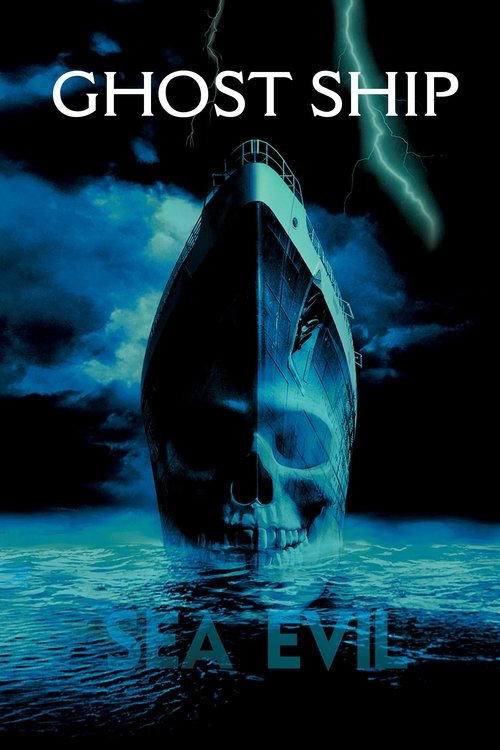The crew of the Arctic Warrior, a tugboat used in deep-sea salvage operations, are celebrating their recent haul when a stranger approaches them in a bar. Jack (Desmond Harrington) is a pilot. Flying over the Bering Sea, he saw a luxury liner far from any place it ought to be. Jack will show them where for a cut of the profits. The ship is the legendary Antonia Graza, lost without a trace decades ago. And dream catch of salvage operators everywhere. Realizing they can’t get the ship back with one tug alone, the crew board the Graza to get it moving again, only to find it full of vengeful spirits.
We already know spirits walk the decks. Besides it being in the name, the movie opens with a chilling mass-murder of a ballroom full of people. It was the only thing I remembered from my original watch of the movie nearly fifteen years ago. Movie listicals often justify putting Ghost Ship near the top of “scariest” or “goriest” horror-movie lists because of this scene. Which is funny; many older movies are far gorier. The film team made some smart decisions in these opening scenes to set us up for maximum emotional impact, and it’s a splendid example of how clever editing can trick your brain into believing you have seen more than you have.

“Nothing can come between us!”
Ghost Ship is a slow burn. Scriptwriter Mark Hanlon envisioned the movie as Treasure of the Sierra Madre at sea. Greed was supposed to turn the crew against each other. You can still recognize elements of that plot, but the producers had shifted the focus to the supernatural by the time the cameras rolled. I would like to see that other movie, but I also enjoyed this one.
Ghost movies are often difficult to tell. They are often spooky, but not always frightening. What makes them interesting is the tale of how the space came to be haunted. Many ghost stories, and Ghost Ship is one, are mystery stories in disguise. We know somebody slaughtered everyone on board, but we don’t know who or why. What starts as a salvage procedural morphs into a mystery story, told through the hauntings and, in a couple of places, by the ghosts themselves.

“You didn’t happen to bring a Switch with you?”
I appreciate the smart characters. They don’t always make wonderful decisions, at least from a self-preservation standpoint, but taking risks seems in character for deep-sea salvage. Once the crew realizes the Antonia Graza is more than conventionally dangerous, though, their decisions become a lot smarter. Gabriel Byrne plays the Arctic Warrior’s captain, Sean, with a kind of reckless stoicism. If you can imagine Picard, but making Kirk’s decisions, you would not be far off. Munder (Karl Urban) is not bright, but he’s no idiot. And first mate Epps (Julianna Margulies) is cut from the same cloth as Ellen Ripley: smart, practical, and all business.
Emily Browning plays young Katie with surprising complexity. She has no lines in the opening scene, but plays the bored pre-teen for sympathy so well she carries the entire emotional impact of the ballroom murder scene. As a ghost, she’s creepy and heartbreaking at the same time. This would become a familiar role for Browning, who would later on star in A Series of Unfortunate Events and, later, walking-dead girlfriend Laura Moon on the American Gods TV series.

This trip is taking forever.
The movie makes an unfortunate heavy-metal turn at the end. To be atmospheric and creepy for two hours, then do a hard right towards awesome, is jarring. Despite that, it’s one of the best straight-up ghost stories I’ve seen. Which is why I was surprised to discover after the fact that it rated only 16% on Rotten Tomatoes. “Too gruesome,” some critics said, but not by current standards. “Not scary enough,” said others, although I doubt “scary” was the goal.
Who knows? Maybe it was. It would not be the first time I loved the movie that was made instead of the movie that was intended. Sometimes movies hit us in just the right way, no matter what anyone else thinks.
Whatever the case, I doubt Lifeforce (58% on Rotten Tomatoes) is a full 3.5 times better.

Does ghost liquor get you ghost drunk?

